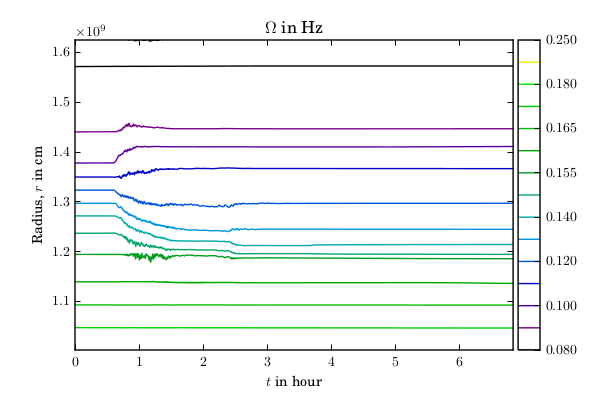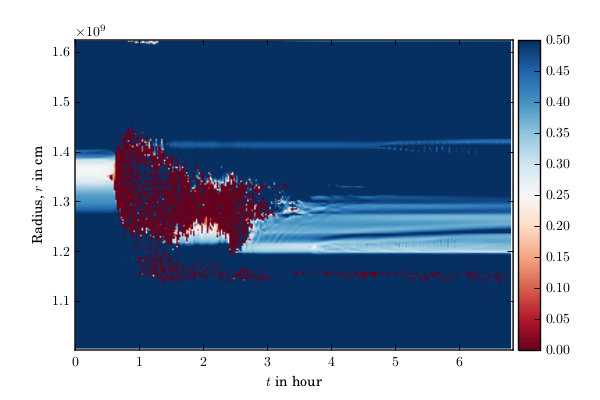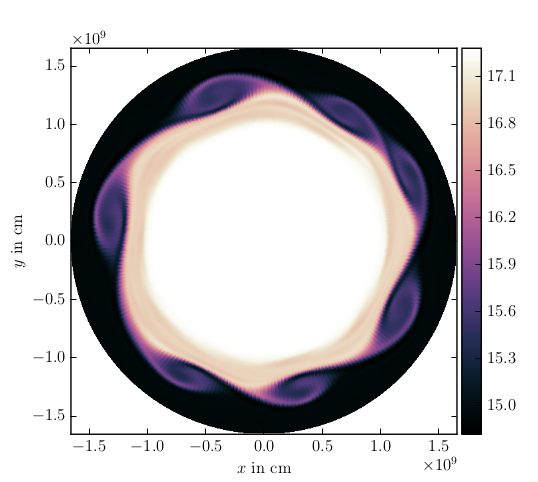2D simulation of dynamical shear
The rotation of stars is a major source of uncertainty in stellar evolution. The enormous timescale of a star's life can only be covered by 1D models, which need to resort to approximations when treating the inherently multi-dimensional effects of rotation. In particular, hydrodynamical instabilities such as the dynamical shear are treated as diffusive processes. We strive to create self-consistent hydrodynamic models of shear instabilities in rotating stars.
This study compares the effects of dynamical shear in a 2D SLH-simulation with the 1D model of a rotating, 20 M⊙ ZAMS star computed by Raphael Hirschi with the Geneva stellar evolution code (GENEC). Both codes use time steps of similar length in the particular phase simulated, which makes this constellation an excellent test bed for trying different prescriptions of shear instablites.
Rotational velocity profile

Richardson number

Shear instability at the equatorial plane
